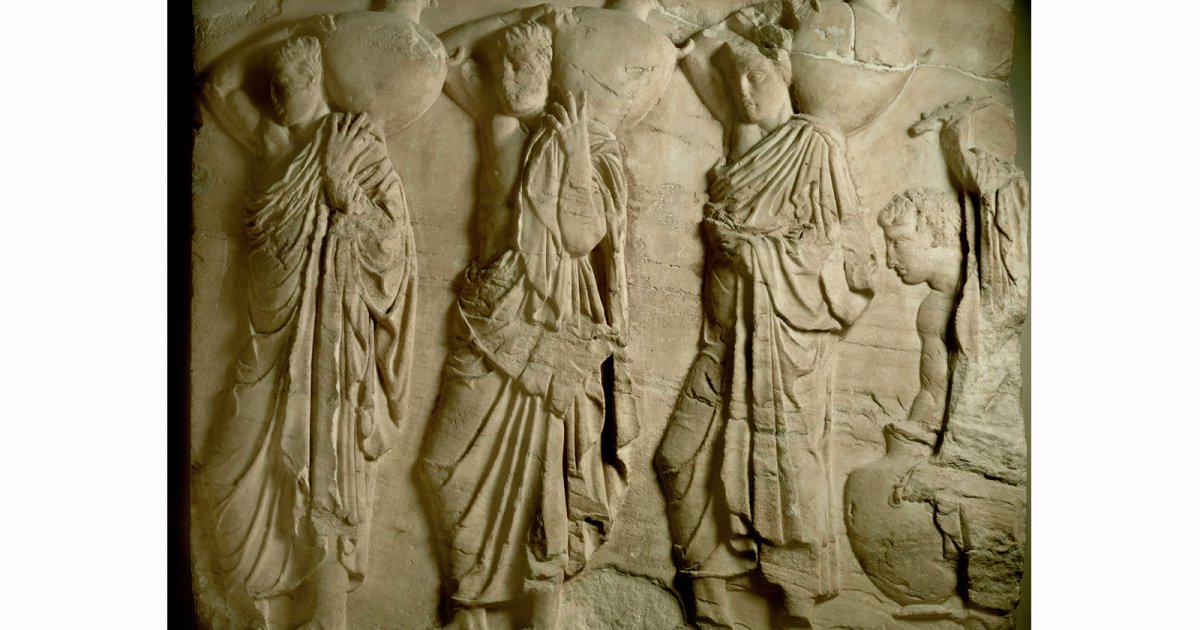ACROPOLIS MUSEUM, Second Floor Parthenon Frieze First Part
 Language: English / USA
Language: English / USA
As you can see, the bas-reliefs that made up the Parthenon Frieze are arranged on a large structure at the center of the museum, with exactly the same dimensions as the naos, or inner chamber, of the Parthenon, and are placed according to their original position, so you can follow the whole narration, with the advantage of seeing it much closer than it actually would have been at the temple.
The 162-meter-long frieze is a celebration of the golden age of the victorious Athenians. It was designed and in part executed by Phidias and by his assistants around 432 BC.
It was composed of 115 meter-high blocks, and depicts 378 figures of men and deities, as well as over 200 animals, especially horses, which account for many of them. The main feature of the frieze is the procession known as the Great Panathenaia, the most important religious festival in ancient Athens. You’ll notice numerous young Athenians carrying vases and ceremonial offerings, animals, wine and fruit. You can see them pulling oxen, or playing the flute or the harp. The procession also included the offering to the goddess Athena of a peplos, a garment, in this case adorned with gold embroidery, as shown in a scene on the east side of the frieze. Next to this scene, you can also see the Gods of Mount Olympus, seated and awaiting to receive their offerings: you’ll recognize Zeus, because he is seated on his throne holding a scepter.
This festival, which took place every 4 years, was in honor of Athena, the protectress of the city, and the whole population, including women, took part. During this magnificent event, the Panathenaic Games were held, with arts and sports competitions, including horse races; this explains the large number of horses and riders portrayed on the frieze.
Just 50 meters of the pediment are original. The rest - which you can recognize from the white color – are copies of the 80 meters on display at the British Museum and other fragments held in different museums. Many, unfortunately, have been damaged.
An interesting fact: the Greek government considers that the remains of the Parthenon displayed at the British Museum were illegally removed by the British and has requested the mediation of UNESCO to get them back, although its efforts have so far been in vain.



